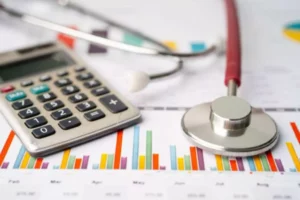Research and development (R&D) is a routine activity when you start or develop your business. It is an exciting period in any company because it involves the creation of the first products or improving existing offerings. If you are just starting a business, R&D can be confusing, especially regarding recording costs. Let’s talk about performing accounting for research and development to guarantee maximum business efficiency and avoid claims from tax authorities.
The definition of Research and Development
R&D is an activity related to studying theoretical materials and developing projects or improvements, which allows you to improve existing commodities or adopt new items to increase revenue. Consider the most popular types of R&D expenditures:
- product design development,
- product testing,
- changing technologies for creating things,
- prototyping, etc.
Companies of varied sizes perform study and development at various scales; entrepreneurs spend time and capital to increase customer satisfaction. Often enterprises organize research and elaboration activities to present unique goods or to update their products and methods of their production.
Enterprises analyze if they want to expand their product line and add non-standard tastes, smells, modern ingredients or improve other parameters. Some people think that pharmaceutical corporations most often carry out research to create unique drugs to rid humanity of deadly diseases. Still, in reality, explorations can be more straightforward, including the search for new perfume flavors, candy flavors, or toothpaste.
Categories of R&D spending
R&D costs are the money a firm invests in testing new products, tools, and technologies and acquiring new knowledge. Such spending includes all costs associated with improving the performance of the organization, e.g., improving product quality, production methods, and delivery of commodities to customers. Firms may purchase themselves or delegate development costs to an outsourced research company in such activities. Before learning how to display expenses in accounting documents, it is crucial to understand what capitalized and incurred expenses are.
Sometimes, the firm may consider part of the spending as non-current resources. Such a procedure is called capitalization and requires that their prices be carried over to expenses over a certain period. Suppose the charges are related to tangible and intangible assets that the organization intends to use to solve other problems. In that case, you can amortize spending over the planned operational period.
The incurred expenses are simply a capital outflow that you don’t expect to pay off in the future. You record this amount as charges for the period the acquisition took place. If you don’t comprehend how to classify costs properly, it is recommended to consult a professional bookkeeper.
The main aspects of R&D accounting
The difficulty with R&D charges is that it is difficult to assess future benefits and correctly display them as assets immediately. Given this ambiguity, GAAP proposes to classify all research and development capital outflows as expenses as they occur. An exception occurs only in a business combination where R&D spending can be capitalized as an element of goodwill. Economic specialists have developed a particular research and development accounting standard:
- Purchased assets and materials: all purchased resources the firm plans to use in the future are displayed in the asset column. However, capital outflows are classified as expenses if such acquisitions do not receive alternative future uses.
- Software: R&D programs often use existing programs or spend capital to create new digital products. The custom forming of the platforms always incurred charges. In contrast, other software may be incurred or capitalized depending on whether you use it to solve problems after the completion of the R&D project.
- Indirect costs: overhead costs are shown in financial documents as they are incurred.
- Contracted services: if a firm invoice third parties to provide research activities that took place on behalf of the organization, it passes on such invoices for expenses.
- Intangible assets: if you are a buyer of intangible resources to achieve goals of R&D and do not plan to use these assets to make a profit over time, costs appear in the expenses category as capital outflows. But cost capitalization is possible if you consider using assets over time.
- Payment of wages: all funds transferred to employees must be transferred to expenditures as they arise.
Some firms enter research and development agreements with partners when another sponsor provides capital to guarantee practical exploration and engineering. The contract may specify the transfer conditions to the funding parties of licensing rights, share in the share capital, part of the revenue, etc. The enterprise that organizes all development activities, obtains from the investor a fixed amount or reimburses part of the costs in any way.
How to organize accounting of research and development costs
Proper management of R&D costs is a fundamental success factor for any department that deals with study and design. Consider a few recommendations from financial experts on how to make accounting for research and development as efficient as possible:
- Analyze the costs to comprehend their future use: for each element of the fees, decide on their prospective utilization to obtain non-research benefits. If future exploitation is possible, you are dealing with capitalized expenses; otherwise, capital outflows can be classified as incurred expenses. Professionals recommend making a table to collect all R&D spending.
- Automate the collection and analysis of information: this will reduce the volume of the manual labor associated with collecting cost data from different sources and recording the R&D expense on income statement. It decreases the overhead, increases the work accuracy, and avoids inaccuracies caused by human error.
- Embed cutting-edge technology to streamline your operations: Adding tools such as artificial intelligence techniques can speed up several tasks, including paper review or image recognition. By using structures like this, teams can save time and capital by getting the most accurate results faster when compared to standard methods.
- Indicate all capitalized expenses in the balance sheets in the column assets. You can create a separate block to monitor research activities in your ledgers if you have to deal with many capitalized resources.
- Make any necessary deductions: the value of any asset decreases over time, but it may retain a residual value, e.g., the resale price of a resource or the value of the patent. If you expect a capitalized resource to have a specified worth, you must subtract that amount from the initial price of the asset.
- Don’t forget about depreciation: take the amount received after deductions and divide it by the planned life of the asset. In research and development, this time is most often associated with the duration of the implementation of the project because this is how much time you will use the asset to solve problems.
When you have completed your analysis of all capitalized costs, you must record any remaining R&D expenses incurred as expenses. You specify them at the time of purchase. Optionally, you can list capitalized charges in the incurred expense if it would greatly benefit your firm.
Final words
If you are the owner of a small firm that is constantly evolving, proper accounting for research and development is just as important as doing research papers. BooksTime’s qualified accountants are on hand to assist the company in adding the tools and processes of bookkeeping to ensure all expenses are correctly recorded. Our specialists will help entrepreneurs to prepare all economic reports following recent changes in legislation. Contact a company representative today to ensure your organization has the financial backing to do R&D.


















